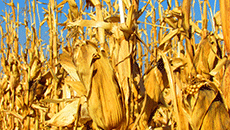
Luan van der Walt, Economist, Grain SA
The same marketing strategies discussed in the previous edition of Perspecitve, were kept unchanged with only the costs adjusted to reflect the changes that occurred in the market prices as well as option premiums over the past two weeks.
In a year such as this, with good productions, and prices under pressure, producers should look at various alternatives that can be used for risk management and marketing purposes. However, there are some important aspects to keep in mind when marketing decisions are considered - of which risk and pricing possibilities are certainly the most important.
Some of the producers’ first questions that comes to mind, are what should I do? Questions like, "Do I sell now and get it over with, do I store to sell later should prices increase or do I sell now and make use of derivative instruments on SAFEX to benefit from a rising market" is all in the order of the day.
The various risks associated with using different strategies are one of the most important factors to consider when making these decisions. This risk mainly involves price and cash flow risk. There are also various costs associated with the use of the different strategies to be considered and these strategies as well as costs will be discussed below. The costs of the strategies will also be updated as the season progresses. The costs are calculated on a per/ton basis and also shown by a hypothetical example of 1 000 ton of maize that has to be marketed to put it in perspective. The direct production cost of the maize amounts to R1 800/ton.
Strategies
The different strategies that can be considered include:
1. Sell only in the spot market - serve as a guideline strategy
2. Store maize up to December and/or March
3. Sell in spot market and buy Call options on SAFEX
Prices
Table 1: Income and cost when using strategy 1
|
If the producer does not apply any alternative marketing strategies, he will only sell the maize as it is harvested and therefore his received price will be that price at which the market is trading on the day of sale, and no further marketing strategy costs will be incurred. It is important to note that these calculations reflect only the SAFEX price and do not include area differential and/or other marketing fees/brokerage fees (Table 1).
Table 2: Income and cost when using strategy 2
|
*Interest on income if the maize was to be sold
**Interest on production costs not covered.
Table 2 clearly indicate that storage costs amount to approximately R150/ton until December and between R260/ton and R270/ton to March 2017. However, this mean that prices should increase by more than these levels up to the date of sale, to justify the maize's storage costs for this period for the producer. The minimum SAFEX price when the strategy ends reflects the minimum price at which the producers has to sell his maize to justify the use of the specific strategy. If the SAFEX price is higher than this minimum prices the producer will cover his cost and make a profit.
Table 3: Income and cost when using strategy 3
|
*Premium obtained from SAFEX
**Interest on income (6.5% p.a) if profit/loss is greather that the option costs, otherwise interest on overdraft account (10.5% p.a)
Table 3 clearly indicate that the costs associated with the use of call strategies are slightly cheaper than costs associated with storage costs. The costs of December call option amounts to between R130/ton and R140/ton while the March call option will cost approximately R200/ton to R210/ton, given current conditions. The break-even price, at option expiry date, is also even slightly lower than what is required to break even with storage strategies.
Important to keep in mind
The purpose of post-harvest marketing is to create the opportunity for you to obtain a better price if the market is to trade positively in the producer's favour (prices increase), but also to minimize the risk should the market not trade favourably. Thus, the risks associated with the different strategies should be taken into account when producers decide which alternative they want to use.
By selling only in the spot market after harvest, the producer has no further price risk, but he also cannot benefit if the market should trade well. However, his risk as well as the possibility of a better price, are limited.
When a producer stores, the risk and price possibilities are unlimited. If the market does not increase sufficiently to cover the storage and interest costs, it will be detrimental to the producer. There is always the risk that the market price does not increase and then the producer still has the commodity – with a lower value - along with the costs associated with the strategy.
When the producer makes use of the call strategy, the producer's risk is limited and the profit potential, unlimited. If the market price does not increase until option expiration date, the producer can only lose the marketing costs (premium and interest) and not incur further losses as he has already sold the maize and received the income. However, if the market grows more than the strategy has cost him, the producer will make a profit with the strategy.